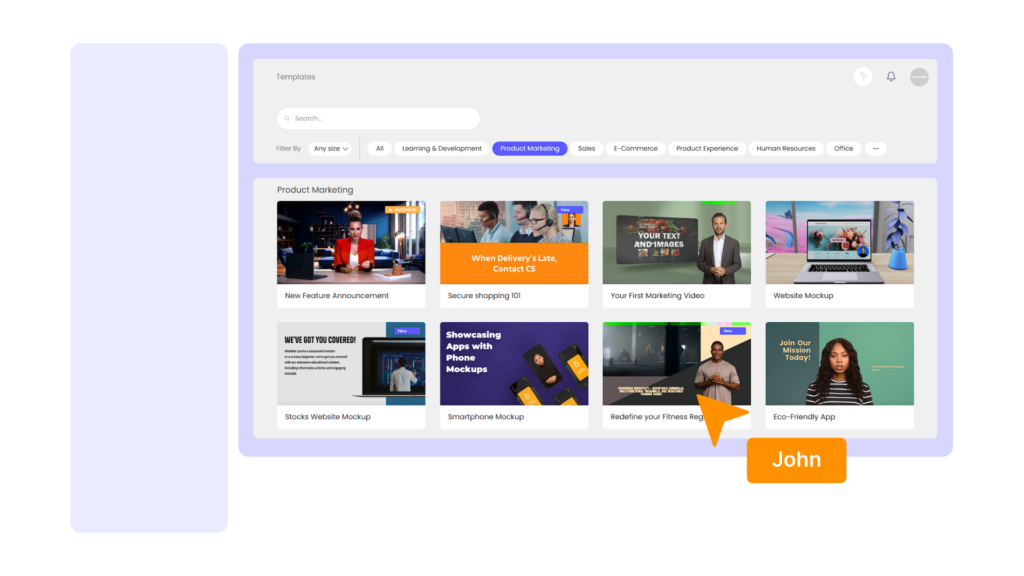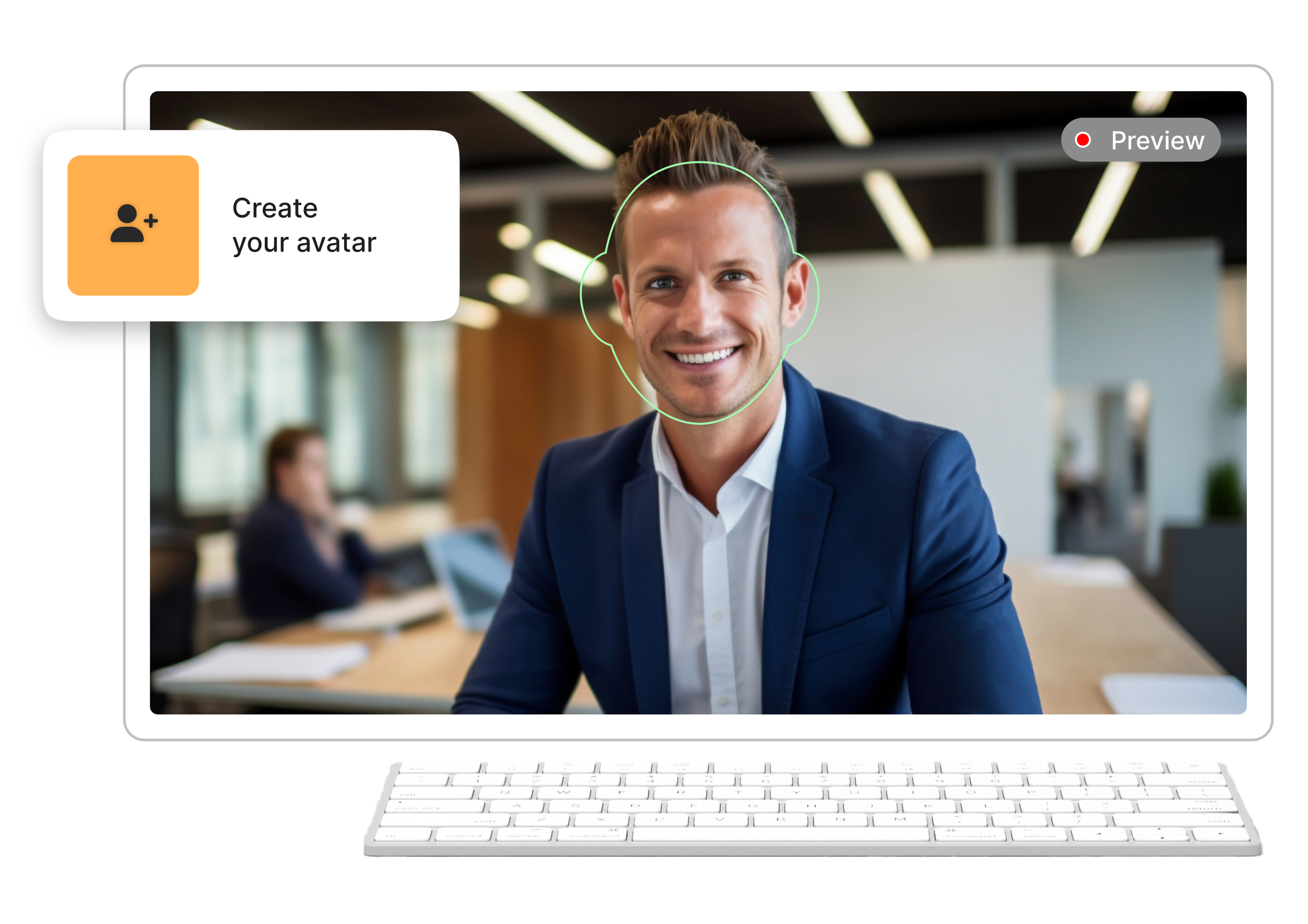High-quality content is an irreplaceable aspect of a successful marketing strategy. Whether you’re trying to reach your target audience, delight web visitors, or encourage customers to continue shopping with your brand, content can and will help you achieve your goals.
But the thing about successfully leveraging content is that there are numerous different formats to choose from. So, you need to understand the potential benefits of each format and what content types to invest in. Ultimately, no two pieces will yield the same results.
This post will introduce you to the eight types of content you need on your website, outlining the use cases and advantages of each one. Additionally, you’ll see some exceptional examples of content marketing in action, employed for various intents. Let’s get into it.
Informative Blog Posts That Attract Awareness-Stage Consumers
Awareness-stage blog posts are some of the most commonly used types of content. And with good reason. Thanks to a low production cost and a tremendous potential for helping you attract your target audience, it’s evident that well-written posts pay off.
If you check out the latest State of Content Marketing Report from Semrush, you’ll find that well-made content does a tremendous job of targeting awareness-stage consumers. This report found that most marketers used content to attract web traffic and boost brand/product awareness. It’s only natural that you could set out to do the same with your blog posts.
Of course, to see impressive returns on your informative blog posts, you have to do your best to optimize them for your target audience.
In addition to performing in-depth keyword research and optimizing for SERP ranking, prioritize giving your readers value and making your resources easy to consume. That way, you won’t just attract prospects to your website. More importantly, you’ll delight them and encourage them to form a positive opinion about your brand, increasing their chances of interacting with you in the future.
Check out the What Is Jiu Jitsu post on BJJ Fanatics.
You’ll notice it’s perfectly optimized to appeal to those interested in learning about the martial art. But, what stands out about this resource is that it doesn’t just help readers grasp the basic concepts of Jiu-Jitsu. The blog post aims to raise people’s awareness about the sport. It gently guides them toward identifying their specific pain point (or goal, in this case) and encourages them to continue learning about the concept by exploring additional free and paid content on the brand’s site.
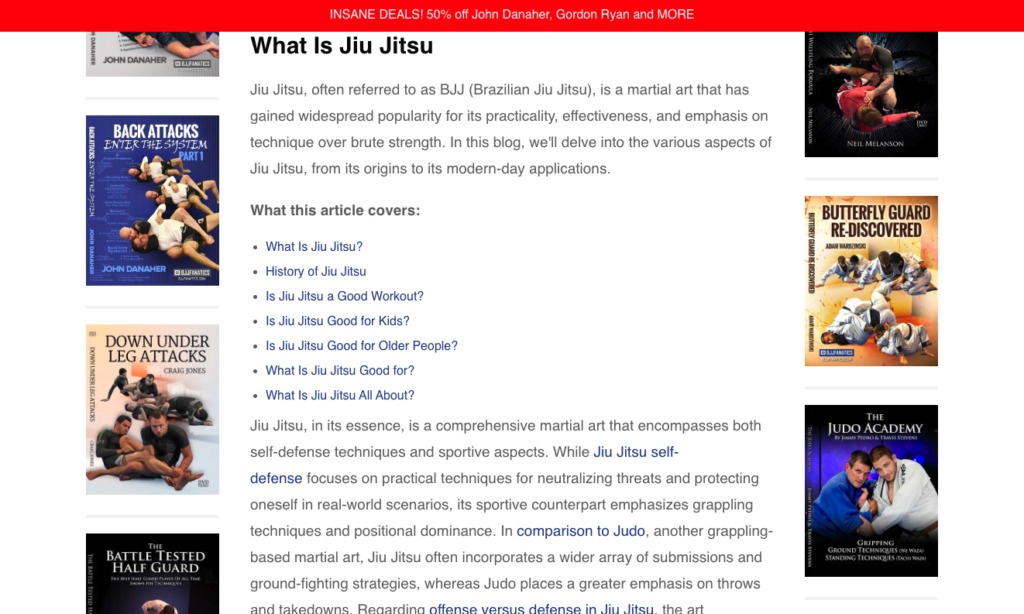
Source: bjjfanatics.com
Unique Educational Articles
Want to maximize the chances of your written articles ranking high on SERPs? In that case, invest in unique how-to articles that teach your audience everything they need to know about resolving their pain points.
Ultimately, educational content inspires conversions. And not just that, but adding the keywords “guide” or “how to” to the title of your blog posts could help you outrank your competition by 1.5 to 3x.
The issue with this content strategy is that many marketers feel uncomfortable giving proprietary knowledge away for free. But, while doing so may seem like a conversion-killer, in reality, it’s anything but.
Using content to demonstrate your brand’s benevolence and trustworthiness is a great way to earn your target audience’s confidence. It also boosts your chances of maximizing sales in the future, especially considering that people prefer to buy from brands they know and trust.
If you check out Going’s post, you’d think it’s a surefire way to deter readers from investing in the brand’s solution. But that’s not the case. The resource doesn’t just help Going earn readers’ trust. It also demonstrates the complexity of booking affordable flights without a dedicated solution, automatically increasing the chances of web visitors realizing that signing up for the brand’s service saves them time and money compared to doing everything by hand.
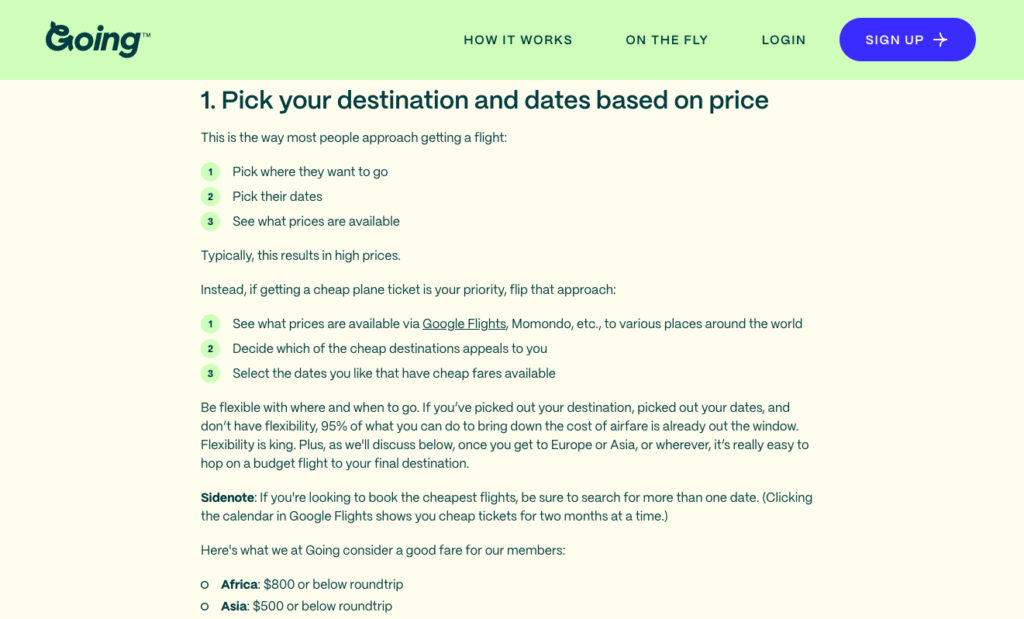
Source: going.com
Explainer Videos
When it comes to wowing people who land on your site’s homepage or landing pages, explainer videos work best.
This type of content is not only engaging and user-friendly but also highly effective at inspiring conversions. Moreover, it’s the perfect solution for introducing prospects to highly technical solutions, like SaaS or niche products.
The best thing is that, in 2024 and beyond, creating engaging explainer videos doesn’t have to take up too many of your marketing resources. On the contrary, you can easily turn articles into videos. So, make sure you utilize these solutions. Then, position the explainers in high-impact spots throughout your website, where they’re sure to be noticed by web visitors.
For inspiration, you can check out the Shopify homepage. By using short-form, silent explainers to describe key features of its solution, Shopify makes it easier for prospects to understand the value of investing in the brand’s services. Moreover, thanks to the page featuring more than one video, Shopify ensures that web visitors understand each product feature and see, through real-life examples, the way it could impact their workflows.
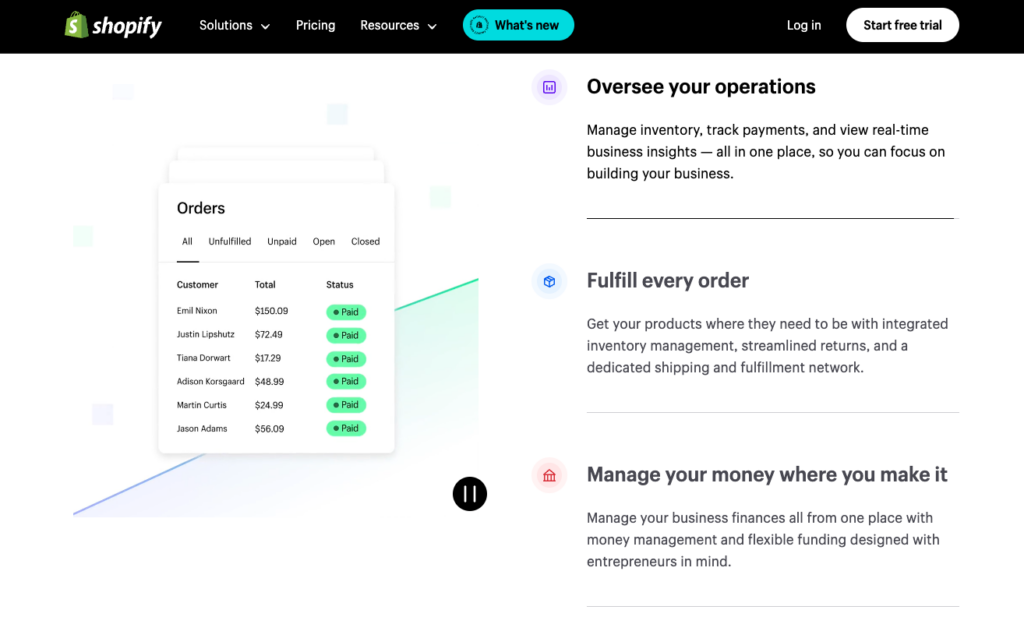
Source: shopify.com
Product Comparisons and Buying Guides
Although content marketing performs marvelously in boosting brand and product awareness, you don’t have to limit yourself to just employing it this way.
If you’re trying to engage consumers populating the lower stages of the buyer’s journey, purchase-oriented content could be an excellent way to introduce your solutions in a positive light.
If you look at some of the latest consumer behavior research, you’ll find that people actively seek resources to help them make better purchase decisions. PWC discovered that 29% of online buyers use price comparison sites while researching products. So, knowing that your target audience is likely to look for this content format (whether you offer it or not), it’s a good idea to add such resources to your company blog.
If you decide to utilize formats that pit one solution against another, you must retain your objectivity. Furthermore, don’t attempt to trick readers into picking one solution.
Instead, prioritize information that paints a real picture of what each product does so that your web visitors receive genuinely practical value instead of false claims and empty promises. That way, they’ll continue trusting your brand as a credible source of info. And they’ll have a much higher likelihood of interacting with your organization in the future than if you gave them poor buying advice.
Smash is a brand that does buying guides rather well. Its Best Amazon Repricing Tools for 2024 guide provides readers with an in-depth, evidence-based, objective review of five solutions. Ultimately, Smash knows that its prospects need trustworthy information. So, to ensure it positions itself as a go-to in terms of business investment and growth advice, it invests heavily in valuable content meant to engage people who know what they need and don’t want to waste their time browsing through tons of generalized info to find a solution for their pain points.
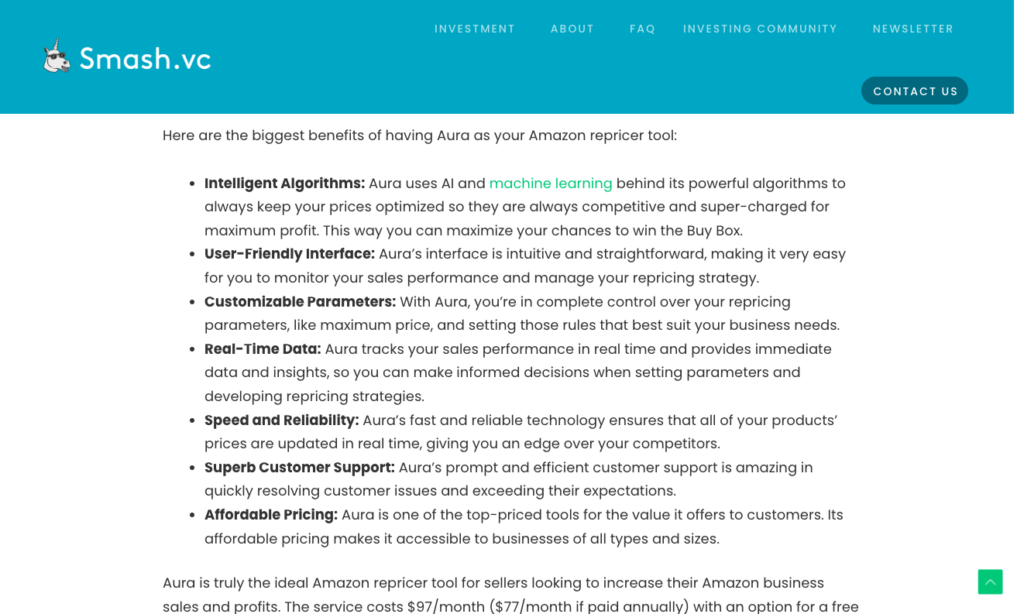
Source: smash.vc
Illustrations, Images, and Infographics
Want to boost the engagement and conversion potential of your website? Why not supplement your content (your site’s homepage or blog section) with visual formats that communicate info far more quickly than text?
Investing in visual formats is a no-brainer for brands that want to wow web visitors. After all, these types of content are (usually) attractive, exciting, and memorable. Plus, they’re an amazing tool, regardless of whether you’re trying to educate your audience, create an emotional connection between your brand and prospects, or give potential buyers a resource that helps them remove a pain point.
Want to see a great example of how a brand implements illustrations in its content strategy? Check out the Guitar String Finger Names post on Classical Guitar Shed. Instead of explaining finger placement with words alone, the brand employs illustrations to get its point across more effectively, transforming a typical blog post into a genuinely valuable educational resource for budding musicians.
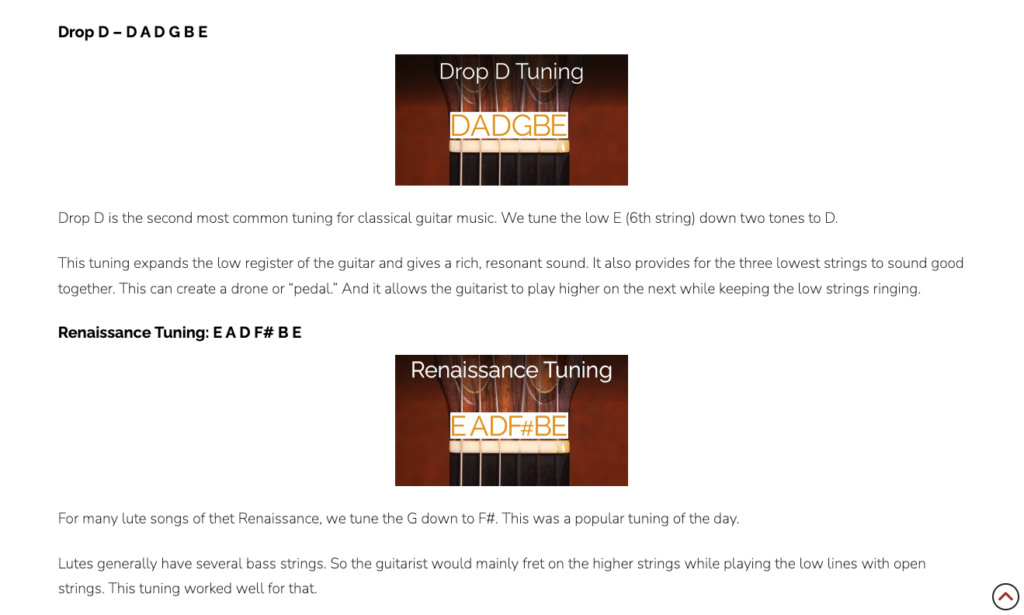
Source: classicalguitarshed.com
Interactive Tools
Visuals are great for helping your web visitors grasp complex concepts or memorize info. However, consider creating original interactive tools to help your prospects remove a pain point (or identify the type of product ideal for their use case).
Research shows that interactive content outperforms its static counterparts in terms of attracting page views. It also boosts user engagement and positively contributes to your site’s overall conversion rate.
So, if you want to invest in content that will elevate your website’s performance, explore opportunities to add interactive tools to landing pages or your homepage.
For example, you can check out the Shop Solar Kits website. Knowing how difficult it is for its users to estimate their solar and electrical requirements, this brand created a library of easy-to-use solar calculators that automatically perform tough mathematical tasks and provide web visitors with accurate information regarding what they need to power their homes.
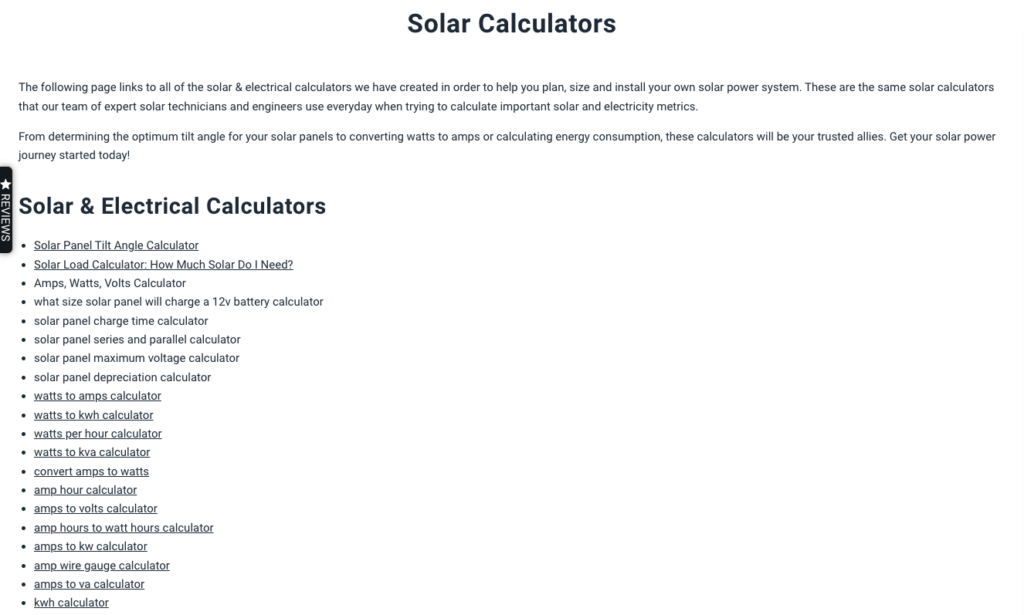
Source: shopsolarkits.com
Interactive tools can also be a great way to move prospects through the sales funnel, direct them toward relevant product options, and encourage conversions.
Check out how Aveda uses a Haircare Quiz to help web visitors in product discovery and provide potential buyers with personalized recommendations that have a high chance of meeting their specific needs.
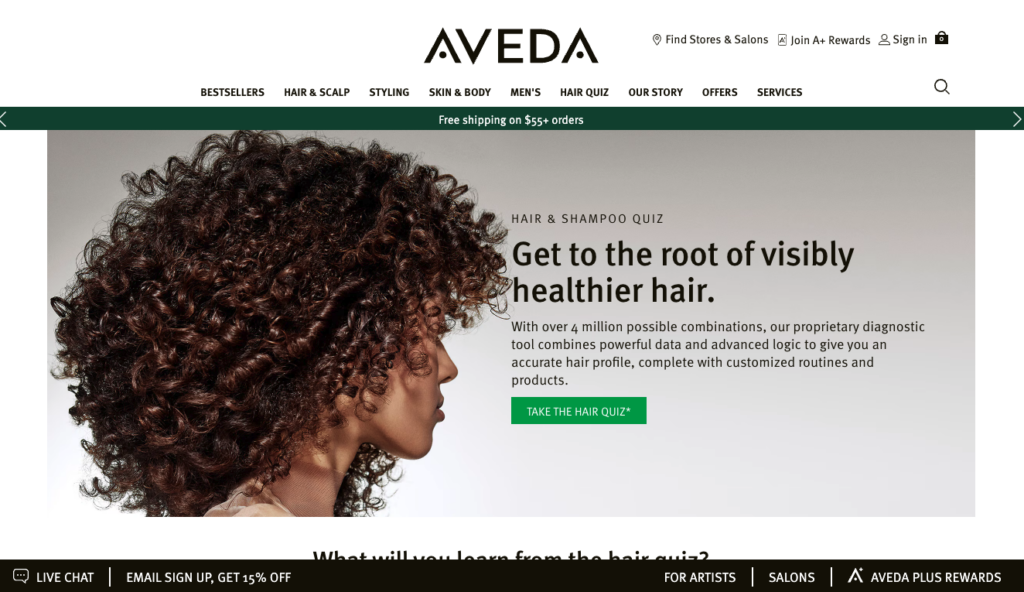
Source: aveda.com
Walled Resources
Sometimes, the best types of content attract and engage your audience and encourage people to form a positive opinion about your brand. Other times, however, the best way to employ content marketing is to capture more leads.
By producing high-quality resources and putting them behind a sign-up wall, you can effectively boost your lead-generation efforts.
As for the best formats to do this, remember that ebooks and white papers may be the standard types of content to put behind a wall. Nonetheless, you can generate equally positive results with live webinars or pre-recorded video resources, as done by Grammarly below.
Just make sure not to ask too many questions on your sign-up forms. And, of course, don’t misuse your prospects’ contact info once you’ve turned them into subscribers. Instead, make it your mission to present them with relevant communication, as that’s the best way to ensure they find value in your lead-nurturing attempts and become loyal customers of your business.
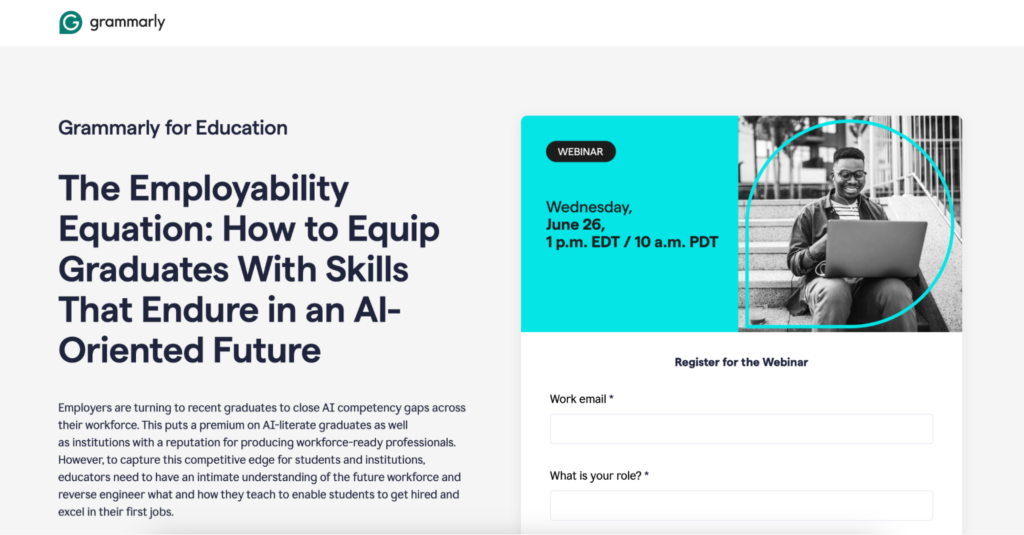
Source: grammarly.com
Post-Purchase Content to Boost Customer Retention
Lastly, as you explore the types of content you need on your site, remember that the sales cycle doesn’t end once you’ve made a sale. Instead, it continues through every subsequent interaction you have with your buyers.
It is those interactions that effectively influence your brand’s customer experience and whether your customers continue buying from your business.
Now, there are many ways to boost customer retention and loyalty. However, if you want to reap the benefits of increased CLV, positive reviews, and more organic reach, dedicate at least a portion of your content marketing budget to producing and distributing post-purchase resources.
The easiest way to do this is to create an extensive Resources or FAQ library on your site, like the Help Center page on the Mailchimp website.
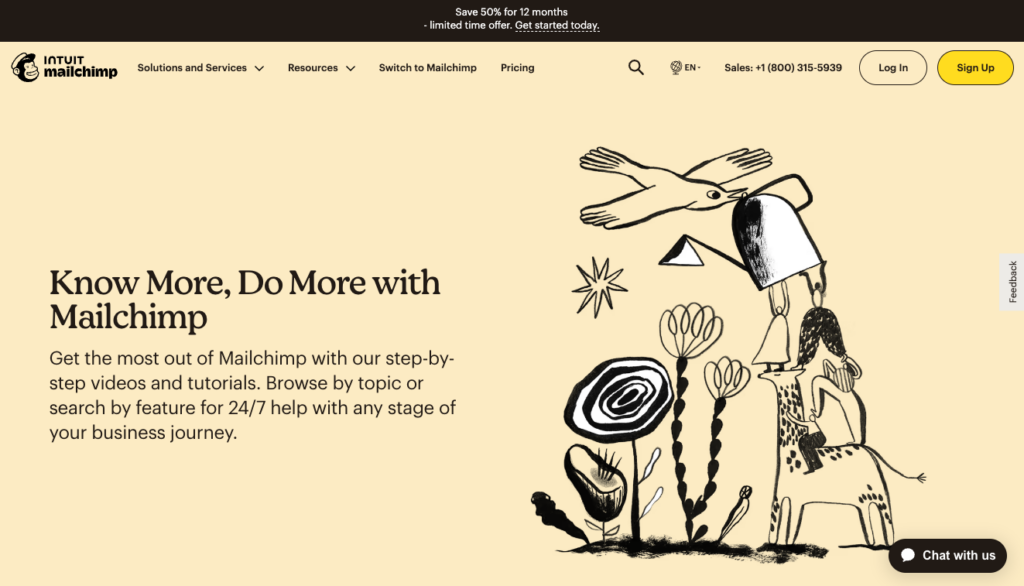
Source: mailchimp.com
However, to make your post-purchase content more engaging and entertaining, opt for video instead of text, as it’s much more conducive for educational purposes.
In Closing
The best types of content for your website hugely depend on your business goals and your audience’s preferences. Still, you must invest in the production of high-quality content if you want to wow your audience.
The eight formats discussed in this guide are all well worth your attention. But, to get the most out of each one, ensure to make it your own. And remember to test performance, as that’s the only way to get the highest possible ROI and make your content-marketing efforts more effective.





